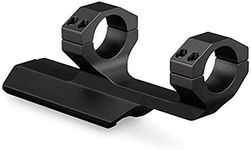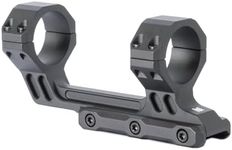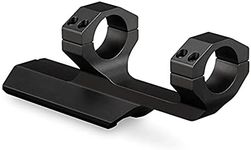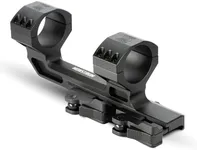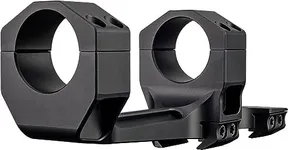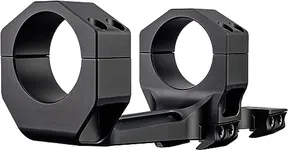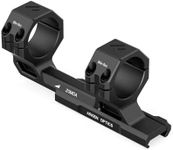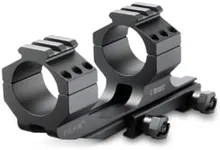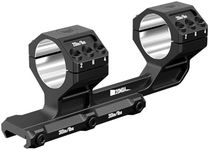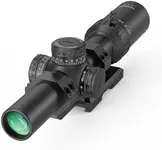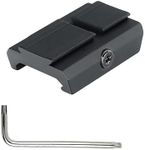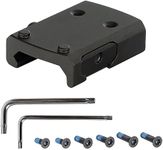Buying Guide for the Best Cantilever Scope Mounts
Choosing the right cantilever scope mount is crucial for ensuring the accuracy and stability of your rifle scope. A cantilever scope mount is designed to provide a forward extension, allowing for better eye relief and positioning of the scope. When selecting a cantilever scope mount, it's important to consider several key specifications to ensure it meets your needs and enhances your shooting experience.MaterialThe material of the cantilever scope mount is important because it affects the durability and weight of the mount. Common materials include aluminum and steel. Aluminum mounts are lightweight and resistant to corrosion, making them ideal for most applications. Steel mounts, on the other hand, are heavier but offer superior strength and durability. If you need a mount for heavy-duty use or extreme conditions, steel might be the better choice. For general use, aluminum is often sufficient and more convenient due to its lighter weight.
Mounting SystemThe mounting system refers to how the scope mount attaches to the rifle. There are different types of mounting systems, such as Picatinny, Weaver, and Dovetail. Picatinny and Weaver systems are the most common and offer a secure and versatile attachment. Picatinny rails have standardized spacing, making them compatible with a wide range of accessories. Weaver rails have slightly different spacing but are still widely used. Dovetail mounts are less common and typically found on older or specialized firearms. Choose a mounting system that is compatible with your rifle and provides a secure fit.
Ring SizeRing size refers to the diameter of the rings that hold the scope in place. Common ring sizes include 1 inch and 30mm. The size you need depends on the diameter of your scope's tube. It's important to match the ring size to your scope to ensure a secure fit and proper alignment. If you're unsure of your scope's tube diameter, check the manufacturer's specifications. Choosing the correct ring size is essential for maintaining the accuracy and stability of your scope.
HeightThe height of the cantilever scope mount determines how high the scope sits above the rifle. Heights are typically categorized as low, medium, and high. Low mounts keep the scope close to the barrel, which can improve accuracy and reduce parallax error. Medium mounts offer a balance between height and comfort, making them suitable for most users. High mounts provide more clearance for larger objective lenses or for shooters who need a higher cheek weld. Consider your shooting style and the size of your scope's objective lens when choosing the height of your mount.
OffsetOffset refers to the forward extension provided by the cantilever mount. This extension allows for better eye relief and positioning of the scope. Offsets can vary, with some mounts offering more forward extension than others. A greater offset can be beneficial for shooters who need more eye relief or who use scopes with longer eye relief requirements. Consider your shooting position and the eye relief of your scope when selecting the offset. The right offset will ensure comfortable and effective use of your scope.
WeightThe weight of the cantilever scope mount can affect the overall balance and handling of your rifle. Lighter mounts are easier to carry and can improve the maneuverability of your rifle. However, heavier mounts may offer more stability and durability. Consider how you plan to use your rifle and whether weight is a critical factor for you. For hunting or situations where you need to carry your rifle for extended periods, a lighter mount may be preferable. For target shooting or applications where stability is paramount, a heavier mount might be the better choice.
